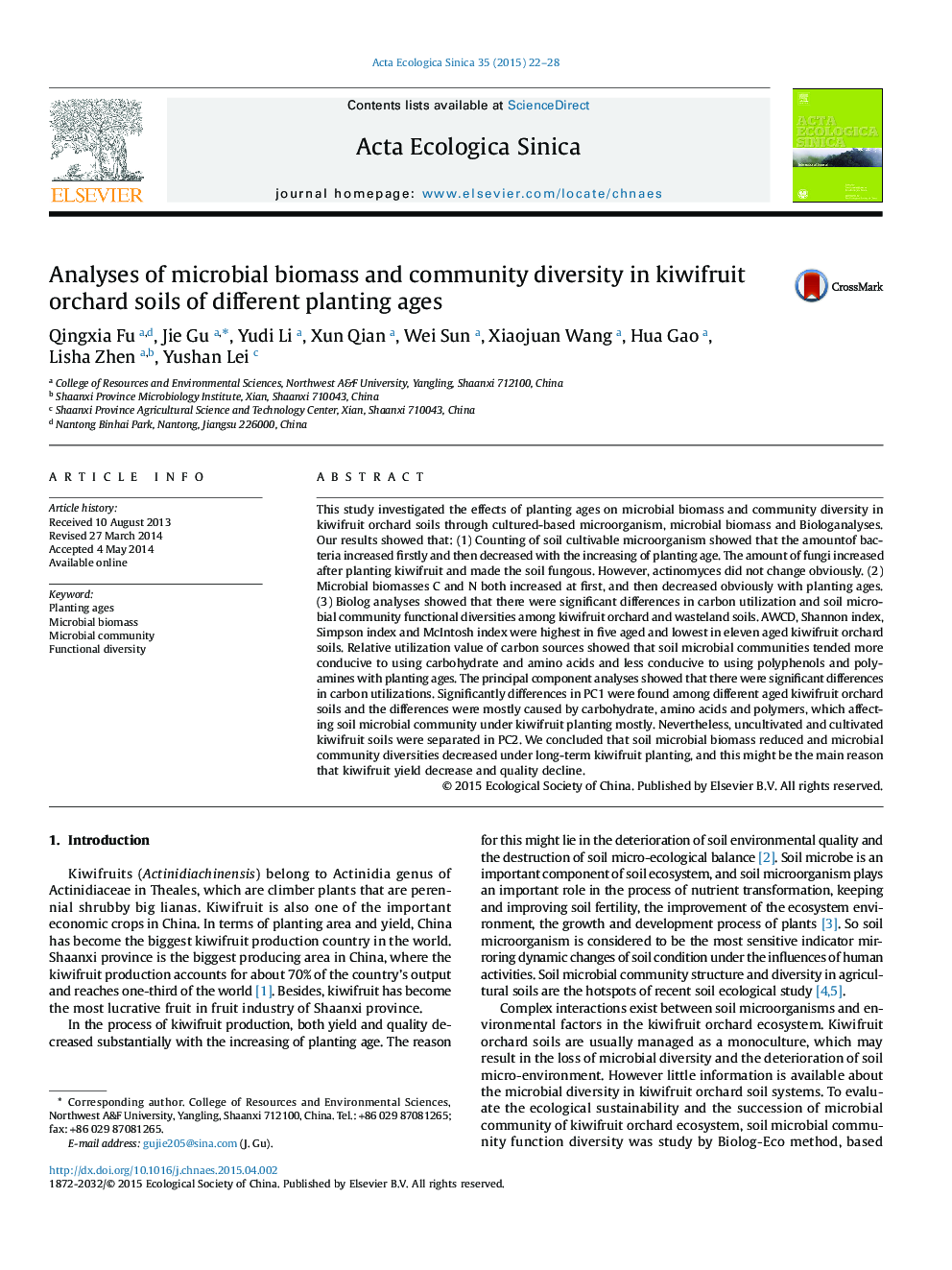| Article ID | Journal | Published Year | Pages | File Type |
|---|---|---|---|---|
| 4379819 | Acta Ecologica Sinica | 2015 | 7 Pages |
This study investigated the effects of planting ages on microbial biomass and community diversity in kiwifruit orchard soils through cultured-based microorganism, microbial biomass and Biologanalyses. Our results showed that: (1) Counting of soil cultivable microorganism showed that the amountof bacteria increased firstly and then decreased with the increasing of planting age. The amount of fungi increased after planting kiwifruit and made the soil fungous. However, actinomyces did not change obviously. (2) Microbial biomasses C and N both increased at first, and then decreased obviously with planting ages. (3) Biolog analyses showed that there were significant differences in carbon utilization and soil microbial community functional diversities among kiwifruit orchard and wasteland soils. AWCD, Shannon index, Simpson index and McIntosh index were highest in five aged and lowest in eleven aged kiwifruit orchard soils. Relative utilization value of carbon sources showed that soil microbial communities tended more conducive to using carbohydrate and amino acids and less conducive to using polyphenols and polyamines with planting ages. The principal component analyses showed that there were significant differences in carbon utilizations. Significantly differences in PC1 were found among different aged kiwifruit orchard soils and the differences were mostly caused by carbohydrate, amino acids and polymers, which affecting soil microbial community under kiwifruit planting mostly. Nevertheless, uncultivated and cultivated kiwifruit soils were separated in PC2. We concluded that soil microbial biomass reduced and microbial community diversities decreased under long-term kiwifruit planting, and this might be the main reason that kiwifruit yield decrease and quality decline.
